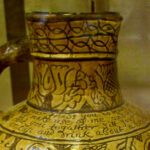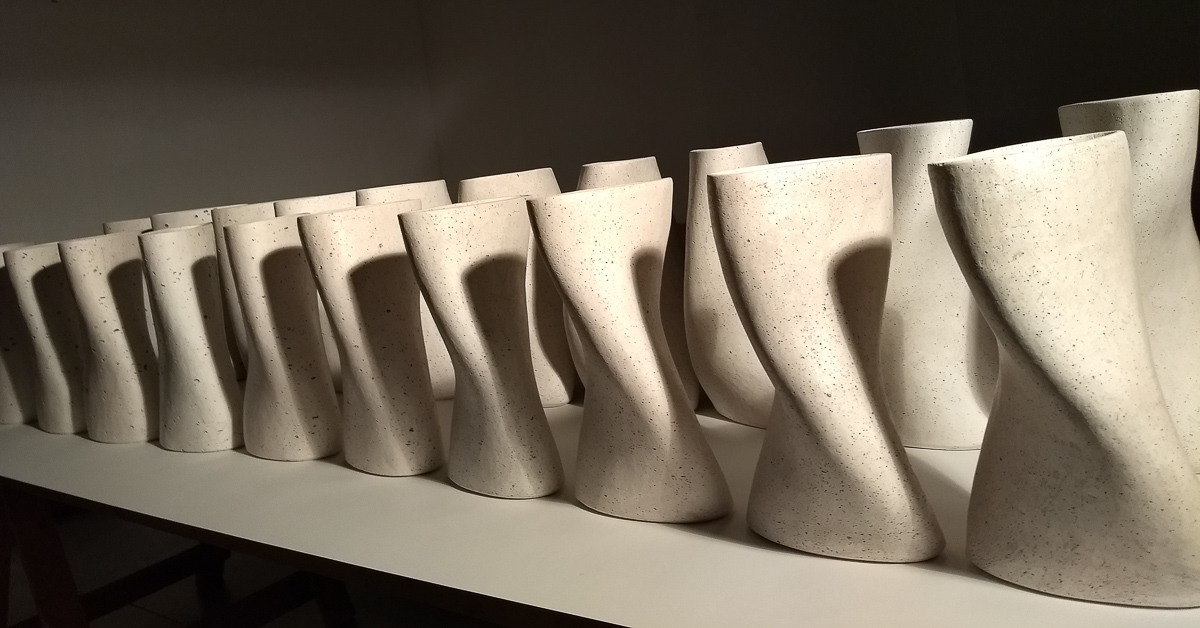
Sebastian Blackie winds a grandfather clock which then unwinds its dark history.
Its skin is an exotic swirl of toffee and nicotine browns but with age, the veneer had cracked and peeled revealing the dry and fragile carcass of common wood beneath. When he was a child it stood tall but silent, its pointless hands slowed and stopped sometime after he was born but before he could remember: a broken time machine. Once a neighbour attempted a repair. He had been a bobby during the Blitz and retired to the village after the war where, as often happens when people relocated to an idealized, but totally different environment, he found he had more time on his hands than he knew what to do with. He claimed some expertise with clocks but the London Copper could not detect the problem. “Moorlands London” it declares in ornate lettering on its tarnished silver face, but no date. Inside the long case a stained label reads “cleaned by S Hunter and Son 115 Manor Street, Clapham 1879.”
1879 was the wettest year in London since records began and in November a fog enveloped the city that lasted until the following March. In early spring, eight miles west of gloomy Clapham, Julia Matha Thomas’s body was being dismembered by her maid Kate Webster. The flesh having been rendered down in a laundry copper and the bones burnt in the fire, Webster packed the remains in a box and threw it off Richmond bridge where it was discovered by a boatman on the tidal river bank, beneath the railway at Barnes the following day. But Thomas’s head was missing, only discovered when digging foundations one hundred and thirty-one years later next door to the murder scene on the property of the naturalist, traveller and broadcaster Sir David Attenborough.
At her trial Webster, from Ireland, an unmarried mother who had impersonated the victim, wearing her clothes for several days after the murder and selling her furniture, was condemned in the press as much for her nationality, sexual morals and unearned middle-class pretensions as for the grim details of the crime. The coverage was extensive with much speculation and detail about both the victim and the accused. It seems Thomas, a retired teacher, twice widowed, employed a servant more for appearances than from necessity. She was said to be a demanding employer who found it difficult to retain staff.
Webster is represented as quite unsuitable as a maid having been repeatedly imprisoned for numerous counts of larceny in Ireland, Liverpool and West London. The two women argued because Webster had returned late from her afternoon off visiting the Hole in the Wall pub on the way home. The story has a gothic filmic quality: Webster lurching down the ill-lit, foggy street to be confronted by a furious Thomas. The argument becomes heated until the younger woman pushes the older down the stairs, finishing her off by throttling her in the dark hall below. Despite Webster’s claim to be pregnant she is found guilty and hung at Wandsworth prison the same year.
In 1879 the boy’s great grandfather James Haldane Stewart died. His widow Emily and seven children are obliged to vacate the rectory at Brightwell, Oxfordshire staying for a time with her sister Caroline and brother Authur, the latter a collector of antique clocks, at Leverson lodge on Clapham Common. The lodge had been owned by their aunt Miss Fanny Leverson Gower and left for the use of unmarried girls in the family. As well as the clock the boy was to inherit his great grandfather’s diary of when he sailed to America from Liverpool, where a new church, St Brides, had been built for his father in this rapidly expanding city.
He arrived in 1853 at the mouth of the Mississippi and left, a year later, from the St Lawrence; a generous break from his duties as a country parson. It is a fascinating account that includes him witnessing a slave auction in New Orleans Bell hotel. He writes: “Are they sold, yes I have seen it” and “there is no denying it Uncle T is true”. He describes the scene in great detail, including that it appeared families were being separated with wives, husbands and children going to different owners. “I am an Englishman” he tells the room “I have never seen such a sight and hope I never will again”. He writes that he vented his indignation by spitting on the floor of the St Louis auction.
It is interesting that the inherited wealth that enabled him to visit America was probably based on slavery. His maternal grandfather David Dale built New Lanark, an industrial complex and using the latest Arkwright technology spun American-grown cotton on the falls of the Clyde. Dale, the son of an Ayrshire greengrocer was an enlightened employer for the time feeding, clothing and housing his workforce as well as providing dancing lessons for the child labourers. He was founder and chair of the Glasgow Society for the Abolition of the African Slave Trade despite the fact that the cost of his raw material and his wealth were directly connected to this horrendous crime.
Later as Stewart travels up river by paddle steamer he encounters a pro slaver who told him ”forty years ago you could hear the lash and screams from both banks”. He also met an Irishman who told him “The English are as bad as Nxxxxxs and the aristocracy should all be burnt like bugs in a mattress”. He comments, “If hard words are an argument, that gentleman has the better of it”. He would not have experienced such candour at home and clearly had little understanding of why so many Irish bitterly hated the English, particularly since the rebellion eighty-one years earlier when, in the aftermath, the wives of convicted rebels had little choice but to follow their husbands to the colonies as indentured slaves where they were often bred like horses with kidnapped and trafficked Africans. Unlike the men, the women could in time achieve freedom but their children remained the property of planters and, by proxy, their gentile backers in Britain.
James Haldane Stewart made other trips visiting South Africa where he describes a Zulu village, writing “It was my first encounter with wild people”. He hires a horse and guide and rides for several days across the bush to met chief Letsie of Lesotho. He visited Egypt where he saw Cleopatra’s Needle, before it was stolen by the British and then travelled up the Eastern coast of the Mediterranean visiting Florence Nightingale’s hospital at Scutari and meeting Mary Seacole at Sebastopol. He was in Rome to witness the troops of Victor Emanuel enter the city after the downfall of Papal power and in Berlin when the Kaiser, Bismarck and Von Moltke arrived in triumph at the end of the Franco-Prussian war. He is the first vicar of Brightwell to be photographed and his portrait hangs today in the vestry.

In 1879, Eight thousand miles from Brightwell, the bushranger Captain Moonlite commits robbery under arms; his gang taking twenty-five hostages before being captured after a shootout with the police. Moonlite, whose real name is Andrew George Scott, was born in Ireland, had shown interest in entering the priesthood and become a lay preacher in the Australian state of Victoria, but only a year later, disguised in a black crepe mask he robs a bank, the first of many similar crimes. He was arrested and imprisoned several times but after his capture in 1879, he is found guilty of murder and hung the following year at Darlinghurst Gaol, on the kiln site in its present-day incarnation as the National Art School, Sydney.
Back in murky London on the North bank of the Thames not far from the site of Thomas’s murder, worshipers at St Andrews church, Star Road establish Fulham football club in 1879; the first in London to play the game professionally. Away the British team were fighting the Zulus in the heat of kwa Jimu (Rorke’s Drift) and invading (again) Afghanistan’s capital Kabul, supposedly to protect British interests in India. In 1879 an African American, a former slave ironically called White, was the first black man to play major league baseball with the Providence Grays, while in a saloon in New Mexico Doc Holliday shoots and kills Mike Jordan, the only time he is arrested for murder.
In 1879 Laton Alton Huffmann, a recorder of Frontier and Native American life, photographed the Arapaho war chief Pretty Nose who had fought at Little Big Horn three years earlier. Pretty Nose lived to see her descendent Mark Soldier Wolf return from the Korean war in 1952. That was three years after the boy was born, about the time the clock came to his home.
Sometimes, twisted in cotton sheets, I awake to hear the clock’s throaty ticking at the top of the stairs in the dark chora outside my bedroom door, the only place in the house that accommodates its stature, and then only with its central gilded bauble removed. For the past twenty years since it came to me after my siblings and I cleared the family home, it has worked again.
Having slid the battered head from the walnut shoulders I gently bathed its mechanism in paraffin. Soothed with fine gun oil, its once grimy teeth and laborious pendulum, released. But regularly each week when my arthritic hands open the glass window to wind its leaden weights I get a waft of history. An olfactory patina, unlike any other. Not the sharp scent of death or its gagging aftermath, nor the bitter stench of poverty and suffering, not even the lingering taste of polished privilege. The smell is neither pleasant nor unpleasant. It seems the cogs have done their work, grinding the past till dry, measured and consistent.



